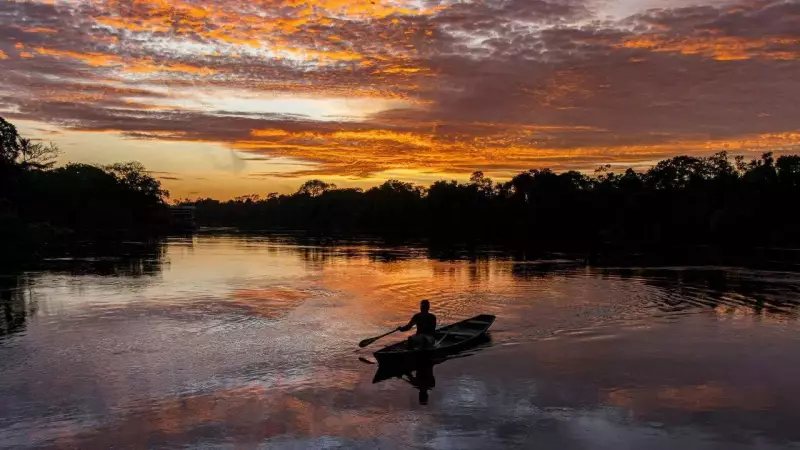
Rivers typically follow gravity's pull, moving steadily from higher elevations to lower ground in one consistent direction. Yet across our planet, extraordinary circumstances sometimes cause these waterways to perform a stunning about-face, flowing backwards against their natural course.
What Forces Make Rivers Reverse Direction?
This remarkable reversal can last from mere minutes to several months, or even become a permanent transformation, depending on the powerful forces involved. Understanding backward-flowing rivers reveals how tides, massive floods, human engineering, and ancient geological shifts can completely reshape our world.
Here are six extraordinary rivers known for flowing in reverse at different points in history, each telling a unique story about our planet's dynamic systems and the natural forces powerful enough to push water against its usual path.
Tonlé Sap River: Cambodia's Annual Marvel
The Tonlé Sap River in Cambodia stands as the world's most famous example of annual river reversal. During dry seasons, this river flows southward into the mighty Mekong River. However, when monsoon rains arrive, the Mekong swells so dramatically that increased water pressure pushes massive volumes back into the Tonlé Sap, completely reversing its flow.
This annual phenomenon causes Tonlé Sap Lake to expand several times its normal size, creating one of Asia's richest freshwater ecosystems. The reversal supports millions of fish, thriving floodplain forests, and the livelihoods of countless Cambodian communities. This natural event holds such cultural significance that Cambodia celebrates it through the Water Festival, marking the precise moment the river changes direction.
Chicago River: America's Engineered Reversal
The Chicago River represents one of humanity's most dramatic interventions in natural water flow. In the early twentieth century, engineers permanently reversed the river's direction by constructing an elaborate system of canals and locks. Originally, the river flowed into Lake Michigan, which supplied Chicago's drinking water but also carried sewage into the lake.
To protect the city's water supply, engineers redirected the river to flow away from Lake Michigan and toward the Mississippi basin. Today, the Chicago River continues flowing backward compared to its original course, standing as a landmark achievement in civil engineering history.
Amazon River: South America's Ancient Flip
The Amazon River experienced one of history's most significant natural reversals millions of years ago. Before the Andes Mountains formed, the Amazon drained westward into the Pacific Ocean. As tectonic activity uplifted the Andes, the land gradient changed dramatically, preventing water from flowing west.
The river gradually reversed direction, eventually carving a new eastward path into the Atlantic Ocean. This geological reversal reshaped much of the South American continent, profoundly influencing biodiversity and rainforest development. Though the Amazon doesn't reverse today, its ancient backward flow remains one of Earth's most impressive natural river transformations.
Mississippi River: Hurricane-Driven Reversals
The Mississippi River occasionally flows backward during extreme weather events. One particularly dramatic reversal occurred during Hurricane Isaac in 2012, when powerful storm surges pushed water upstream, temporarily forcing the river to flow backward for several hours. A similar reversal happened during Hurricane Katrina.
These events remain rare, occurring only when powerful winds, tidal surges, or rapid pressure changes overwhelm the river's natural forward flow. When backward flow happens, the surge can damage riverside communities, disrupt shipping operations, and cause sudden inland flooding, serving as a stark reminder of how extreme weather can overpower even the continent's mightiest rivers.
Hudson River: America's Tidal Estuary
The Hudson River functions as a tidal estuary, meaning ocean tides significantly influence its flow patterns. During high tide, seawater pushes upriver from the Atlantic Ocean, causing sections of the Hudson to slow, stall, or briefly flow backward.
While this reversal doesn't last long, and the river still drains naturally toward the sea overall, twice each day the river experiences tidal reversals visible in the movement of floating debris or small boats. The Hudson's tidal behavior also shapes its unique ecology, mixing saltwater and freshwater in a constantly shifting balance that creates one of nature's most accessible examples of predictable backward flow.
Thames River: Britain's Iconic Tidal River
The Thames River in the United Kingdom experiences daily tidal influences from the North Sea. When tides rise, seawater moves upriver and can reverse flow in lower reaches near London. This tidal push historically caused significant flooding in riverside districts, leading to the creation of the famous Thames Barrier.
While the Thames doesn't permanently flow backward, these daily tidal reversals represent a natural feature that shapes navigation schedules, wildlife patterns, and urban planning throughout the region. The Thames demonstrates that even the world's most iconic rivers can experience backward flow under natural tidal conditions.
These six remarkable rivers illustrate nature's incredible power to defy expectations and reshape landscapes through extraordinary hydraulic phenomena. From Cambodia's annual reversal celebration to America's engineered waterways, each example reveals different aspects of how water interacts with our dynamic planet.





